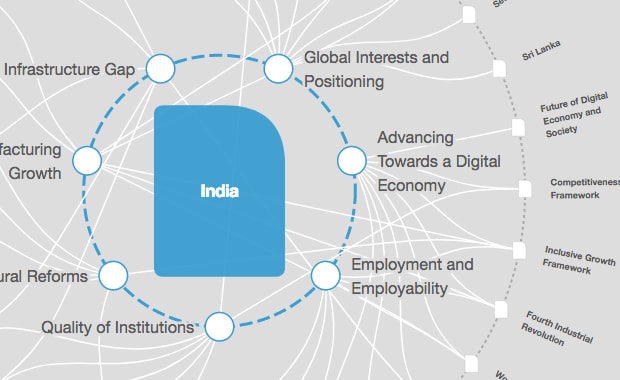How India's rooftops are leading a solar revolution

India is at the forefront of the solar revolution because of installing rooftop solar units to it's buildings. Image: REUTERS/Stringer

Get involved with our crowdsourced digital platform to deliver impact at scale
Stay up to date:
India
The solar revolution is taking off across the world, but the fastest growth seems to be happening on the rooftops of India.
Last year, India added more rooftop solar capacity than in the previous four years combined. That makes solar the fastest-growing area of the country’s clean energy market. According to a report from Bloomberg New Energy Finance, the country added 715 megawatts of solar power to the system, up from just 2227 the year before. Now, the country is running 1.3 gigawatts of solar energy and is estimated to reach 9.5 GW by 2022.
The major boost can be attributed to the lowering cost of rooftop solar units in India, which has dropped by 50 percent in the last five years, making it cheaper than commercial and industrial power in the country. Now, setting up a rooftop solar system is cheaper in India than the global average by 39 to 50 percent.

In this climate, the government of India is also pushing for more solar with a target of reaching 40 gigawatts, a steep goal that is causing the government to create incentive programs and policies to encourage the change. This has included holding auctions to have companies set up over 1 gigawatt of rooftop projects in the first nine months of 2017.
Incentives and all, the initiative to reach 40 gigawatts is still running behind. So far, only 3 percent of the goal has been achieved, and over half the rooftop solar units are concentrated in just six states, according to the report. This could be because of confusion over the main incentivizing reason to install solar units in the first place: "net metering," or selling surplus power back to the electricity utility.
With that oversight, the majority rooftop solar growth is driven by commercial and industrial users, and the residential segment has been slow to take off.
“The high upfront capital expenditure compared to commercial and industrial (C&I) consumers, a lack of financing options, and cheaper grid electricity for residential consumers with low consumption currently make rooftop PV (photo voltaic) less attractive for residential consumers than their C&I counterparts,” the report reads.

On top of that, India’s power distribution companies see solar as a drain on their income potential, and those are not exactly going out of their way to promote it.
However, net metering could provide the push needed to get residents on board. While businesses have a harder time generating surplus power and reaping the benefits of selling it back, residential homes forgo the need for power during much of the day, meaning a surplus is easy to obtain.
Don't miss any update on this topic
Create a free account and access your personalized content collection with our latest publications and analyses.
License and Republishing
World Economic Forum articles may be republished in accordance with the Creative Commons Attribution-NonCommercial-NoDerivatives 4.0 International Public License, and in accordance with our Terms of Use.
The views expressed in this article are those of the author alone and not the World Economic Forum.
Related topics:
The Agenda Weekly
A weekly update of the most important issues driving the global agenda
You can unsubscribe at any time using the link in our emails. For more details, review our privacy policy.
More on Geographies in DepthSee all
Andrea Willige
April 23, 2024
Libby George
April 19, 2024
Apurv Chhavi
April 18, 2024
Efrem Garlando
April 16, 2024
Babajide Oluwase
April 15, 2024
Rida Tahir
April 9, 2024






